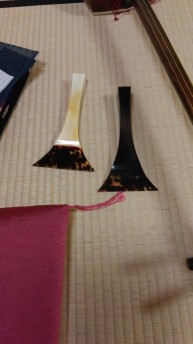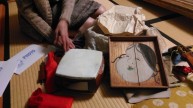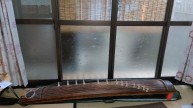For my CIP, I’ve taken ballet classes at K.Classic Ballet, and private lessons in Nihon Buyou- classical Japanese dance. It has definitely been a highlight of my time in Japan!
I had no idea how much ballet would make Kyoto feel like home. Throughout my life, ballet has followed me everywhere I’ve gone- I’ve been dancing seriously since I was about eight, helped direct my college’s ballet company, and have also studied a ballet academy in Paris. Ballet classes are remarkably similar all over the world- so enrolling at K.Classic ballet felt less like being the “new kid,” and more like re-joining a community where I’ve always belonged. Additionally, I’m so lucky to have found such an inspiring place to take class- several students from the school have placed in internationally-known competitions, and last week, the class was visited by a recent alumni- who is now dancing professionally at American Ballet Theatre!
Being in the ballet studio has really helped me learn to pick up on small social cues and cultural differences. The atmosphere in most good ballet schools (anywhere in the world) ranges from disciplined to strict, and K.Classic Ballet is no different. On my first day, I remember the teacher making a speech to her students (in somewhat difficult to understand Kansai-ben) about the importance of working hard, and not wasting valuable time in the studio. As the semester has passed, I’ve noticed that the students here seem to define hard work differently than I have in the U.S. At home, there are often clear times when it is and is not appropriate to practice on the sides of the floor, (for example, when the teacher is working with another student, it is considered polite to stop dancing and watch.) Here, the students spend a much larger percentage of the time practicing on their own. They are constantly tweaking their technique and working to apply corrections, through repetition in every free moment, especially at times when in my past experience, it would be customary to be still and observant. Additionally, when Sensei gives her students a correction, I’ve noticed that in comparison with most American teachers, she leaves about twice as long for students to practice applying it. In order to fit in, I’ve had to carefully pick up on these different cues, and adjust my working style to match the other students.
Nihon Buyou has also been an incredible experience. I originally started Nihon Buyou in the U.S., when I was about four, and continued until I was about twelve. I had the opportunity to take it up again over the summer in Hokkaido, and was lucky that my sensei from then was able to put me in touch with a sensei in Kyoto. I absolutely adore my sensei here- she is one of the warmest, most understanding people that I’ve met. She spends a lot of time making sure that I understand the technical vocabulary that she uses, but has a sense of humor when things become confusing or difficult. Furthermore, something that has surprised me about Nihon Buyou here is the slight emphasis on developing a personal relationship with the teacher. In every lesson, the two of us start and end the lesson with a cup of tea, where we discuss everything from my host sister’s undoukais to her recent trip to Tokyo. I’ve taken private lessons in ballet before, and music as well, and although I’ve always gotten to know my teachers very well, there has never been an established time to stop and pause and talk with each other. For me, especially with the occasional language barrier, taking time to drink tea together has helped me to better communicate with my teacher during the lessons themselves.
Overall, dancing in Kyoto has enriched my experience in two ways. Ballet has helped me find a place where a shared interest has helped me find a sense of belonging, while Nihon Buyou has helped me make the most of my time by helping me learn something that is incredibly difficult to pursue in the U.S. I’m incredibly grateful for the experiences I’ve had this semester, and can’t wait to see what the next will bring!



